11 Rarest Succulents in the World: Over the past few years, people all over the world have gotten more interested in collecting succulents and growing their own as gardens.
The recent resurgence of interest in the vast array of plant species has, however, had a deleterious effect on a number of succulent species in their natural habitats.
Many succulents, including some of the rarest ones on this list, are taken from their natural habitats in violation of the law and sold to collectors located all over the world.
As a result of this, several species of succulents have become extremely endangered in the wild settings in which they are found, and several of the succulents on this list are on the verge of going extinct.
Be sure that any unusual succulents you have in your collection come from a responsible source, even though it’s lovely to look at them and appreciate their rarity.
11 Rarest Succulents in the World 2024
1. Sand Dollar Cactus
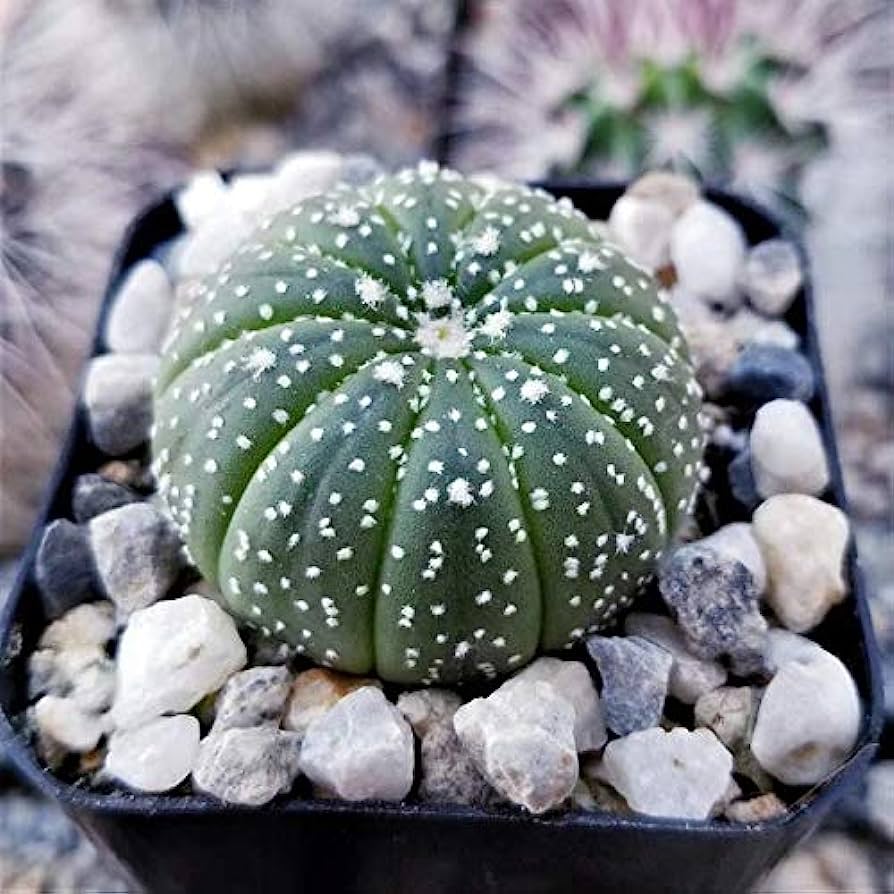
- Current Estimated Number: about 2,000
- Location (Range): Texas, USA; and Tamaulipas and Nuevo León, Mexico
- Scientific Name: Astrophytum asterias
The Sand Dollar Cactus is a rare species of spineless cactus that is native to certain regions in Texas and Mexico. It is also known as the sea urchin cactus, star cactus, and star peyote.
Succulent and cactus aficionados frequently grow this adorable miniature cactus in their gardens. Since the middle of the 1800s, when it was first harvested, the Sand Dollar Cactus has been widely cultivated as a decorative succulent.
However, because of its widespread appeal, the Sand Dollar Cactus is in danger of extinction in its natural habitat. The IUCN Red List notes that individuals from all over the world frequently steal cacti from their natural habitats in order to illegally ship them to their homes.
The most recent report on the Sand Dollar Cactus population counts was published in 2015, and it said that there were only approximately 2,000 individual plants surviving in their natural habitat.
It is actually fairly simple to cultivate the Sand Dollar Cactus from seeds or cuttings, which is why conservationists strongly discourage people from harvesting it from its natural habitat.
2. Salão
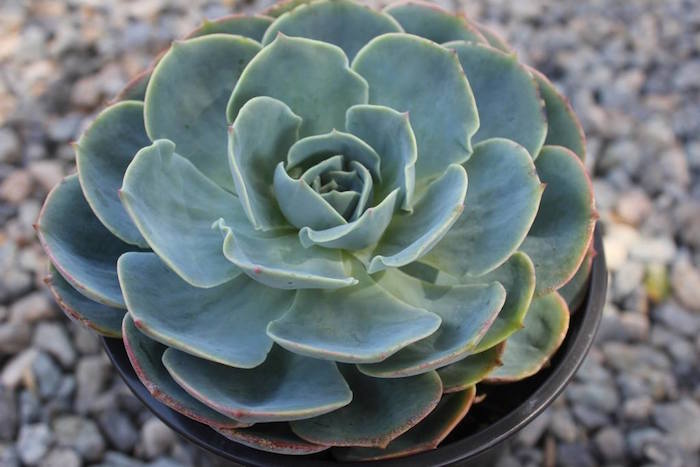
- Current Estimated Number: fewer than 1,000
- Location (Range): Santo Antão, São Vicente and São Nicolau (Cape Verde Islands)
- Scientific Name: Aeonium gorgoneum
Aeonium gorgoneum, more often known as Salo by the people who live on the Cape Verde Islands, is an endangered species of succulent plant that is susceptible to being overharvested.
In traditional medicine, salo is frequently used to cure coughs in addition to a variety of other medical conditions. The IUCN Red List estimates that there are fewer than 1,000 Salo plants still existing in their natural habitat.
Santo Antao, So Vicente, and So Nicolau are the three islands in Cape Verde where the Salo plant may be found growing.
Even though some of the locations on each island where salo grows are on territory that is protected by parks (Parque Natural de Morocos, Parque Natural Cova / Paul / Ribeira da Torre, and Parque Natural de Monte Verde), the process of collecting salo is not yet effectively managed.
3. Pelotilla de Chinamada
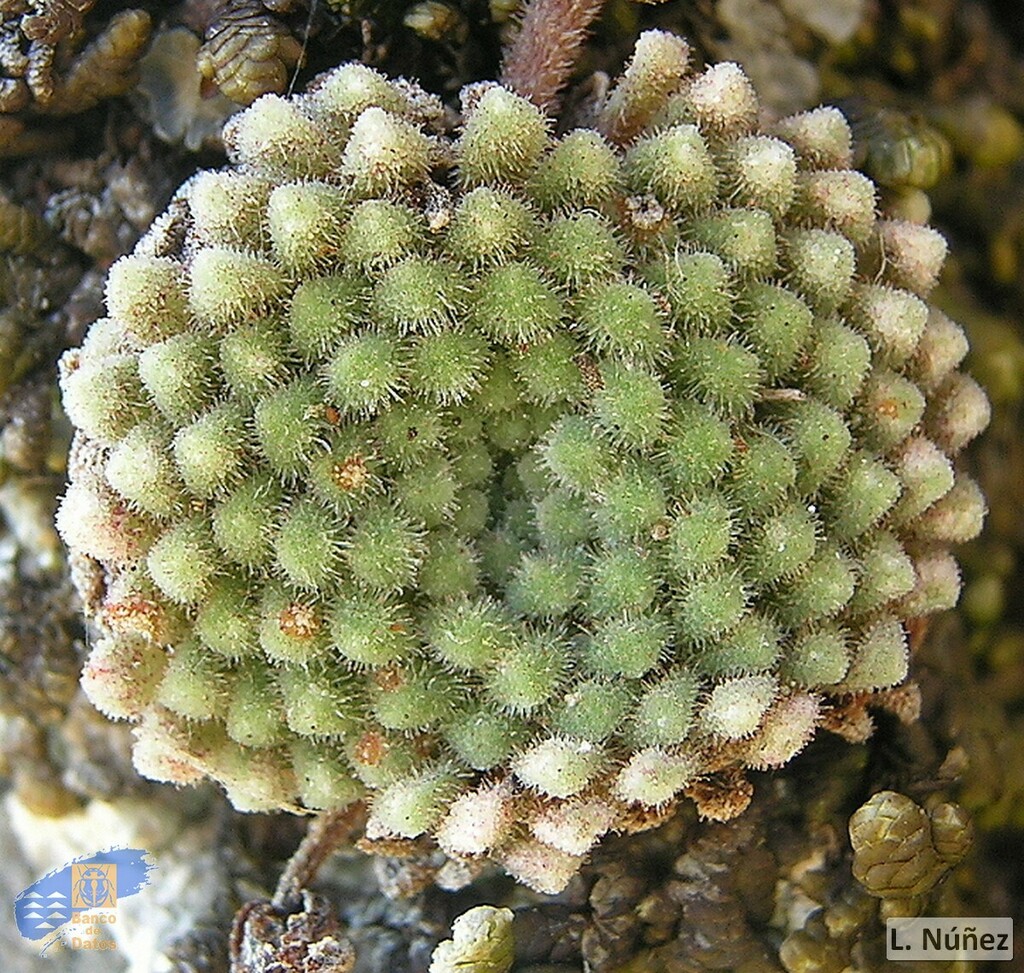
- Current Estimated Number: fewer than 600
- Location (Range): Tenerife, Canary Islands, Spain
- Scientific Name: Monanthes wildpretii
Pelotilla de Chinamada is an extremely uncommon species of succulent that can only be found on the island of Tenerife, which is part of Spain’s Canary Islands.
Only one square kilometer (0.386 square miles) of land is needed for the growth of each and every Pelotilla de Chinamada that has ever been discovered.
Pelotilla de Chinamada had a total population count of 593 individuals in 2009, of which 504 were considered to be mature plants. In 2009, the population count was recorded.
Pelotilla de Chinamada has the propensity to colonize cracks and crevices as it grows. Additionally, it frequently grows in close proximity to other succulents belonging to the genus Monanthes.
The town of Pelotilla de Chinamada is located in close proximity to a main road, which has had a severe impact on the population there, which was already quite low.
Because of this, the habitat of the Pelotilla de Chinamada has deteriorated, and the succulent is now at risk of being gathered and sold as a rare plant.
4. Rose Pincushion Cactus
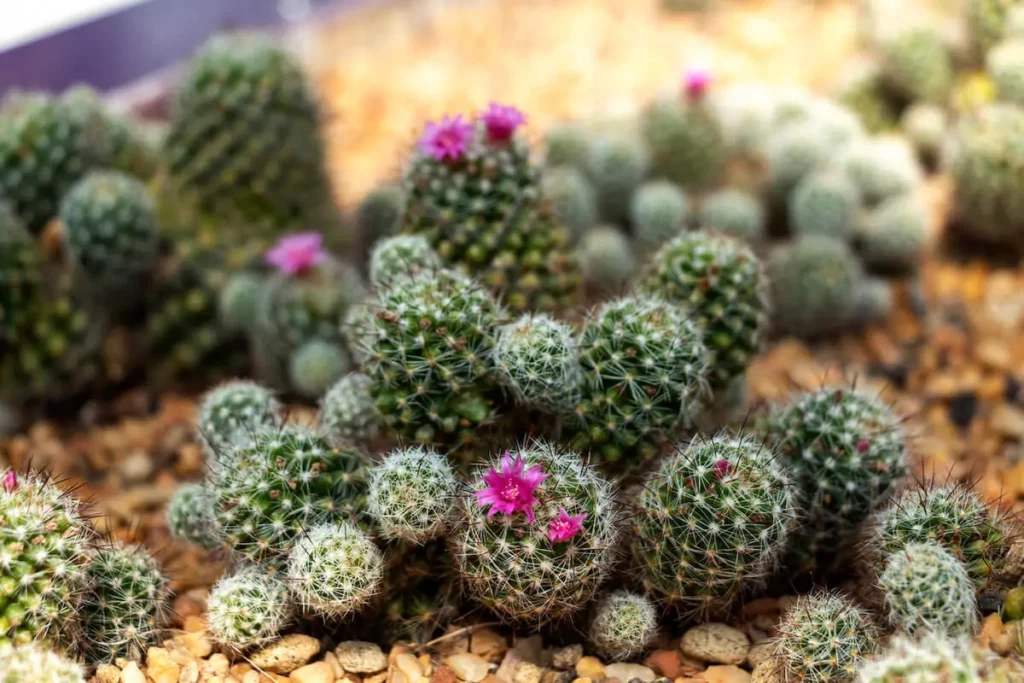
- Current Estimated Number: fewer than 250
- Location (Range): San Miguel de Allende in Cañada Virgen, Guanajuato, Mexico
- Scientific Name: Mammillaria zeilmanniana
The Rose Pincushion Cactus is a succulent that is uncommon and considered to be in a critical state of endangerment in its natural habitat; despite the fact that it is commonly cultivated because of its stunning crown of pink blooms. Unfortunately, the Rose Pincushion Cactus’s widespread appeal is also one of its greatest weaknesses.
The illegal collection is one of the primary factors contributing to the precipitous decline in the wild Rose Pincushion Cactus population.
To make matters even more difficult, the Rose Pincushion Cactus can only be found growing in a little region of San Miguel de Allende, Caada Virgen, Mexico (about 1 square kilometer or 0.386 square miles). There are less than 250 wild Rose Pincushion Cacti left in the world, as stated on the IUCN Red List.
5. Vahondrandra
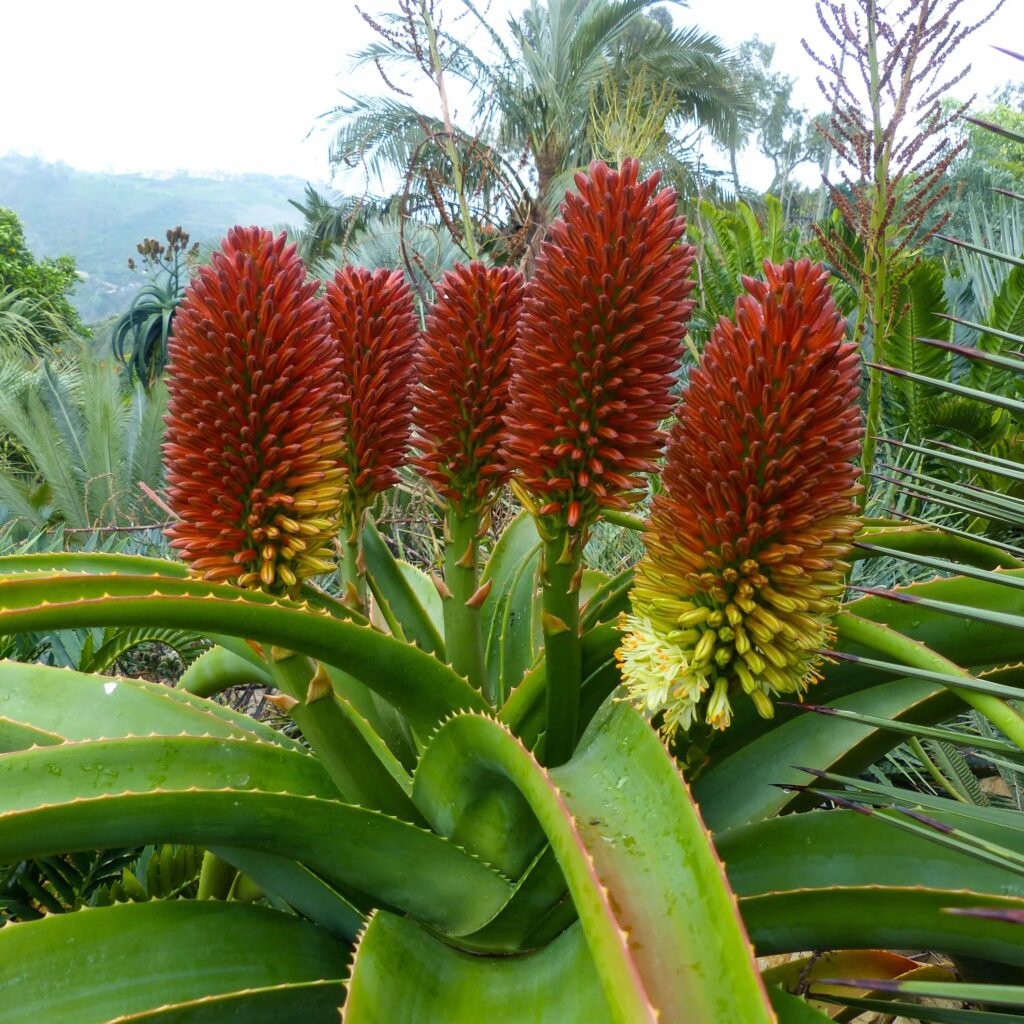
- Current Estimated Number: 200 – 500
- Location (Range): Taolagnaro region, Madagascar
- Scientific Name: Aloe helenae
An endangered succulent native to southern Madagascar, the Aloe helenae is also known as the Vahondrandra on the IUCN Red List. Both of these names refer to the same species. It is thought that there are between two hundred and five hundred wild Vahondrandras, and there is a possibility that their population is declining. The elimination of the Vahondrandra’s natural environment to make way for human activities like farming and mining poses the greatest danger to the species’ ability to continue existing.
Even though the Vahondranda may not make it through much longer in its natural habitat, there are still some living specimens of the plant housed in various botanic gardens all over the world.
Additionally, Vahondradra is occasionally traded for the purpose of private cultivation, despite the fact that it is still extremely uncommon in both its natural environment and in other regions of the planet.
6. Estevesia alex-bragae
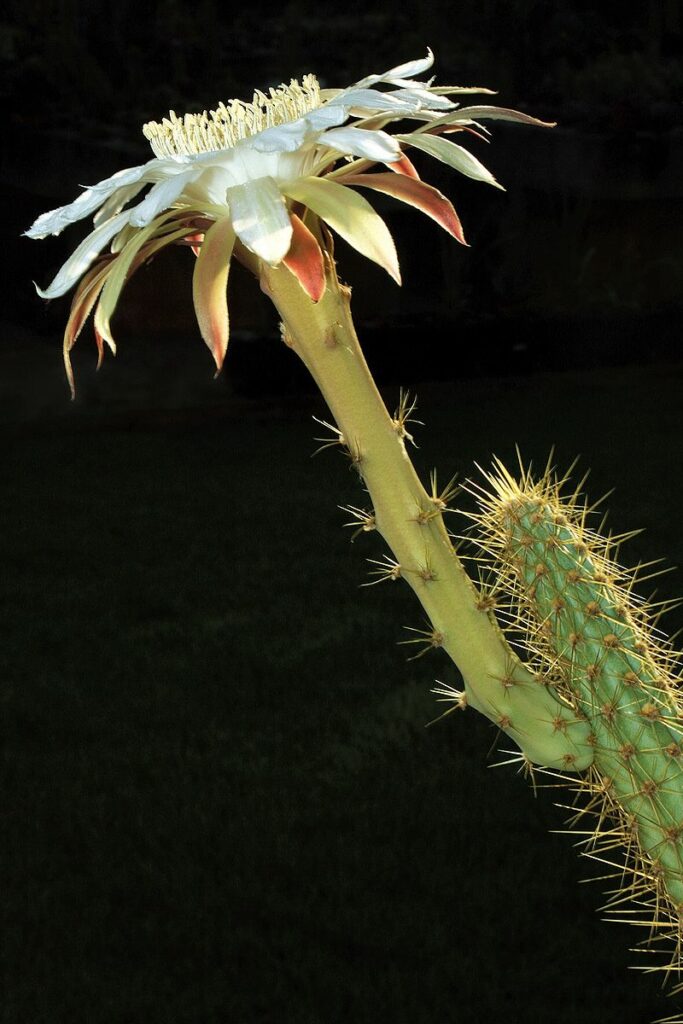
- Current Estimated Number: about 200
- Location (Range): Goiás, Brazil
- Scientific Name: Estevesia alex-bragae
There are only one known species of succulent plant in the genus Estevesia, and that is the Estevesia alex-bragae plant. Pierre J. Braun first described this extremely unusual flowering cactus in 2009, but very little is known about it due to the fact that it is so uncommon.
Unfortunately, this succulent, which was already quite rare, is now considered to be in a critical state of extinction, and it is estimated that there are no more than 200 unique plants surviving.
In 2009, researchers looked into the Estevesia alex-bragae species, and during their investigation, they found that area that had been cleared for soya farming was located only 30 kilometers (18.64 miles) away.
If the land in the area is not changed soon, the IUCN Red List predicts that up to 90 percent of the surviving Estevesia alex-bragae population will be exterminated. This prediction is based on the assumption that soya cultivation will continue.
7. Giant Quiver Tree
- Current Estimated Number: fewer than 200
- Location (Range): Ritchersveld, Cape Province, South Africa; and possibly as far north as Brandberg, Namibia
- Scientific Name: Aloidendron pillansii (previously Aloe pillansii
Even though it does not resemble most succulents in appearance, the Giant Quiver Tree is in fact a type of aloe tree that is indigenous to southern Africa. Aloe plants in general are classified as succulents.
The Giant Quiver Tree, also known as Aloidendron pillansii, is the most endangered of the three different aloe plants that can be found in Africa. The IUCN Red List estimates that there may be less than 200 individual Giant Quiver Trees still existing in their natural habitat.
In the past, the Giant Quiver Tree and other aloe trees were referred to together as aloes; but, in recent years, a new genus known as Aloidendron has been established to house these one-of-a-kind succulent trees.
The Giant Quiver Tree has the potential to become quite tall, reaching a maximum height of approximately 10 meters (32.8 feet) at its full maturity.
The naturally low population size of the Giant Quiver Tree, together with illicit collecting, limited natural recruitment, and habitat loss caused by mining and livestock farming, are some of the primary factors that pose the biggest risk to the species.
8. Aichryson dumosum
- Current Estimated Number: 50 – 250
- Location (Range): Magdelena do Mar, Madeira, Portugal
- Scientific Name: Aichryson dumosum
A succulent that is native to one particular region in Madeira, Portugal, and does not have a common name due to its extreme rarity is known as the Aichryson dumosum.
At this time, it is thought that there are anywhere from fifty to two hundred and fifty Aichryson dumosum plants still living in the wild, and the species’ population is continuing to fall.
There are just about 100 square meters (1,076.4 square feet) of protected land where the Aichryson dumosum can be seen calling home.
Even though the habitat of the Aichryson dumosum is protected, the succulent is still at risk of extinction due to the presence of invasive species, trampling, fires, droughts, and landslides.
The Aichryson dumosum is regarded as being in a state of critical endangerment because there are so few of them left.
Aichryson dumosum should be brought to the attention of the general people as one of the conservation efforts that is advised.
9. Parodia rechensis
- Current Estimated Number: about 70
- Location (Range): Rio Grande do Sul
- Scientific Name: Parodia rechensis
The Parodia rechensis is a rare succulent for the same reasons that many of the other succulents on this list are: it is difficult to cultivate and its natural habitat is in danger.
Even though the Parodia, which is also known as the Notocactus rechensis, is on the list of threatened species in the state of Rio Grande do Sul as being critically endangered, the area in which the succulent naturally grows is not protected.
An extensive investigation of the state of the Parodia rechensis population was carried out in the year 2012. The researchers found that there are just two populations of the succulent still alive in the wild, despite the fact that Parodia restenosis is dangerously close to going extinct.
There were only about 42 Parodia rechensis plants discovered by the researchers at the time, and the IUCN Red List estimates that there may only be about 70 plants still alive now.
10. Discocactus subterraneo-proliferans
- Current Estimated Number: likely extinct in the wild, fewer than 50 in private collections
- Location (Range): Britania, Goiás, Brazil
- Scientific Name: Discocactus subterraneo-proliferans
The Discocactus subterraneo-proliferans, which doesn’t actually have a common name, is a species of cactus about which very little is known, other than the possibility that it has been extinct in its natural habitat.
It is recognized as being in a state of critical endangerment by the International Union for the Conservation of Nature (IUCN), and it is thought that there may be fewer than 50 plants being produced privately by people all over the world.
Because of this, the Discocactus subterraneo-proliferans is the most difficult succulent to find anywhere in the world.
This particular species of disco cactus is only found in one region of Brazil, and it is on the verge of extinction due to the clearing and plowing of its natural habitat for purposes of small-scale agriculture and cattle ranching.
The Discocactus subterraneo-proliferans is the most difficult species to cultivate, which is one of the reasons why it is the rarest of all the many species of Discocactus.
Succulent aficionados can be found in both the United States and the United Kingdom cultivating the species known as the Discocactus subterraneo-proliferans.
11. Escobaria minima – Nellie’s Cory Cactus
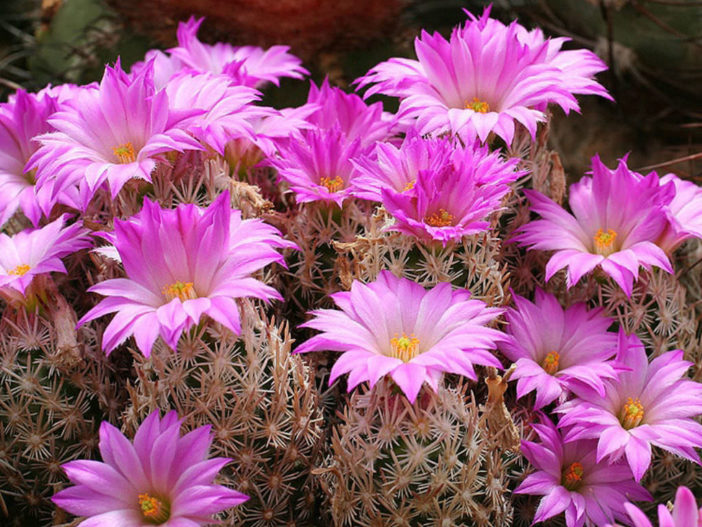
This species is unfortunately endangered to overcollection in the wild. Because of how endangered this species is, it is important to purchase them responsibly and locally from valid growers rather than pickers.
There is a reason as to why the Cory Cactus is a treasured collectible. The dark green flesh is covered by stout stars of spines that make it look like the cactus is covered with lace. They bloom at the very tip of their column and hardly branch. With elegant curves and bright pink flowers, it is easy to see why this species draws the eye.
Rarest Succulents in the World – Newshub360.net
Related Post
Credit: www.Newshub360.net

